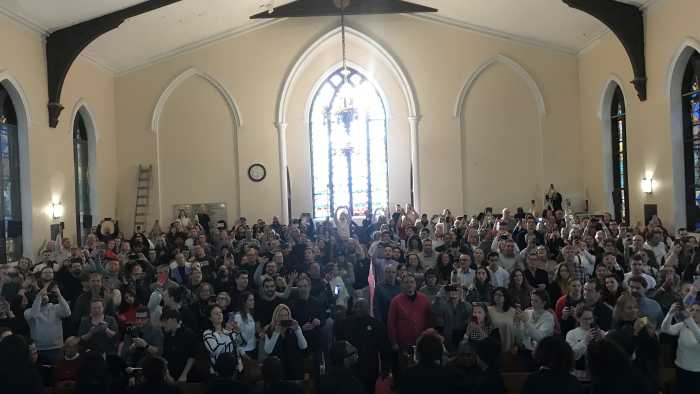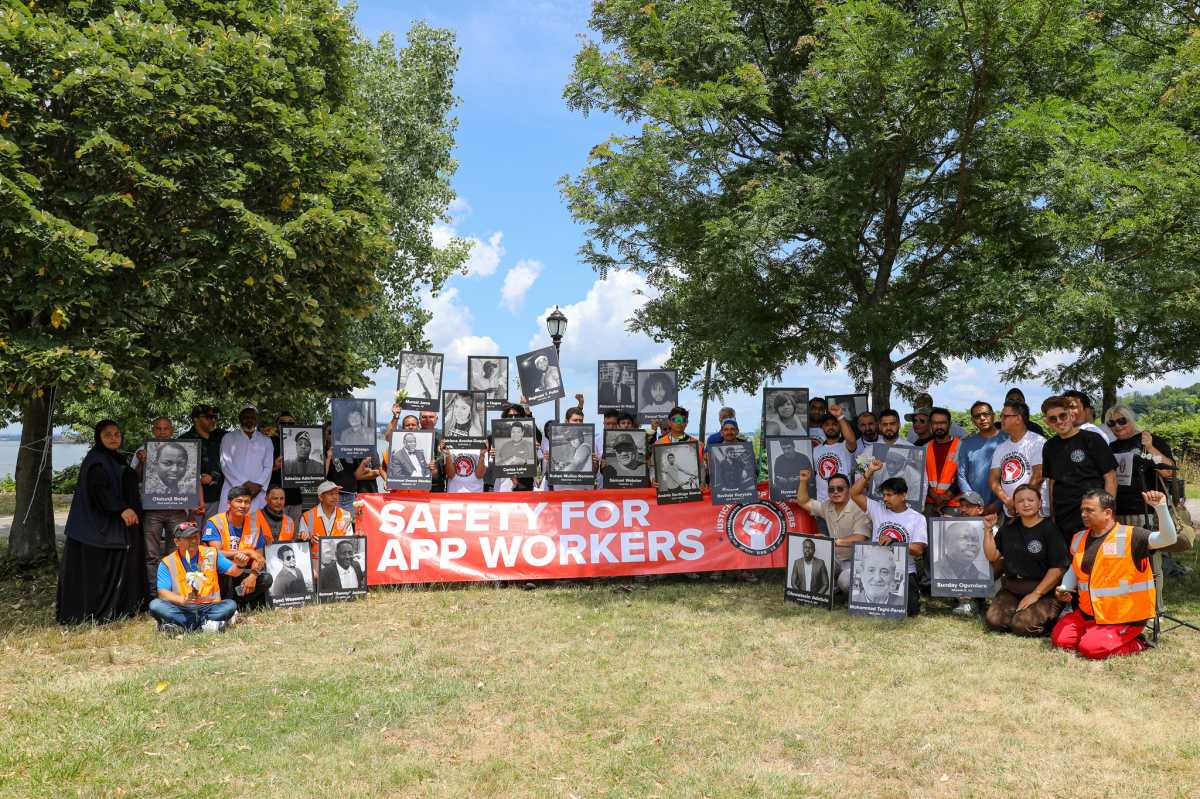By Ronda Kaysen
Friends of Community Board 1, a nonprofit organization created to promote Downtown, might find itself more of a polite acquaintance of Community Board 1 than a bosom buddy, depending on whom the board elects as its new chairperson later this month.
Of the four candidates running for C.B. 1 chairperson, two have indicated that if elected, Friends, which shares office space, board members and staff with C.B. 1, would face more scrutiny.
Friends, a nonprofit 501(c)3, intends to “recreate Lower Manhattan as the most dynamic urban community in America,” according to its 2003 income tax return. The organization has worked as a fundraising and research arm of the board since its inception in June 2001. Its president is Madelyn Wils, who was also the chairperson of C.B. 1 until last March. Its vice president is Paul Goldstein, C.B. 1’s district manager. It has received 9/11-related grants and donations from Downtown individuals and businesses. As an organization, it actively pursues issues the board supports, such as raising funds to build Millennium High School on Broad St.
Until this point, Friends has operated in conjunction with the board with much ease – the leadership of both organizations was the same, after all. But all that may soon change. “When we had Madelyn as head of both organizations, it was obviously a very smooth transition,” said Goldstein, who is vice president of Friends and district manager of C.B .1. “If you get someone in who, for whatever reasons, doesn’t like Friends, it might affect the organization.”
Wils’ secretary said she was out of the country and could not be reached for comment. Wils did not respond to an email message.
Candidate Julie Menin, considered by many board members to be a frontrunner in the race for C.B. 1 leader, has indicated the organization may be in for some intense scrutiny. “I do think that it’s important to try to separate the two organizations,” she said, suggesting Friends consider changing its name to clarify the distinction from the community board. Menin recently joined Friends’ board of directors.
Friends has recently considered a name change – at Menin’s suggestion – but members have yet to fully warm to the idea. “We haven’t come to any final decision as to how to proceed,” said Goldstein. “It’s an item for an upcoming meeting.”
Many board members have felt left out of the organization’s decision-making process, said Menin, especially since many of its dealings reflect the board’s agenda. Late last year, Friends held a series of strategy meetings to determine rezoning strategies for North Tribeca. Many of them were not widely publicized and closed to the press and public. “There have been instances where members were not apprised of particular meetings and felt excluded and it seems to me there’s a very straightforward approach to be able to address that,” she said. If elected chairperson on June 21, she plans to create a task force to examine Friends’ role in C.B. 1.
There are reasons for discrete meetings, said Goldstein. “When you have a developer who’s trying to do things, sometimes it’s not the best thing for him to know everything that we’re working on,” he said, citing the organization’s work on the rezoning of the South Street Seaport area as one example of a need for secrecy.
Goldstein acknowledges, however, that there have been consequences to the organization’s strategy, consequences the organization hopes to mitigate. “If we told [board members] what we were doing, I think they would be less concerned.”
Friends reported $549,807 in gross revenue in 2003 in its 990 tax return, and has typically employed two of the board office’s staff employees. Friends currently funds only one C.B. 1 staff position. Although the employee works in the board office and her job is board-related, she is a Friends employee and is supervised by Goldstein.
The organization recently applied for a Red Cross grant to fund another fulltime staff person to work in Charlie Maikish’s construction oversight office. The employee would also report to Goldstein. Goldstein does not expect a response from Red Cross until the end of the month.
C.B. 1 was the first board in the city to launch a nonprofit arm to supplement its income. “Yes, we were a trendsetter, but I think the trend that we set was one that was welcomed and encouraged by the powers that be in the city government,” said Goldstein. “They encourage agencies to try and raise funds… This is the reality of this day in age. Either you really struggle mightily to exist within the budget the city gives you or you find a way to supplement.”
Candidate Marc Ameruso, a longtime critic of Friends, is more blunt in his plans for the organization if he is elected chair. “They need to find their own address,” he said. “First I’d ask them to please leave and if they refuse, I’d have to talk to the Conflicts of Interest Board.”
The Conflicts of Interest Board has weighed in on Friends and its relationship to C.B. 1, declaring there is no conflict between the two organizations.
Menin did not indicate whether or not she would consider removing Friends from the board office, although she did note, “that would be one of the issues a task force would consider.”
Friends does have friends in some of the candidates. Candidates Richard Kennedy and Anthony Notaro have both voiced their unflagging support for the organization, indicating that little would change if either of them were elected chair of C.B. 1.
Kennedy, considered by many on C.B. 1 to be a frontrunner in the race, is the C.B. 1 interim chair (he was previously co-chairperson under Wils) and a member of Friends’ board of directors. “ It’s a separate organization,” he said of Friends. “We got a ruling from the Conflicts of Interest Board that everything was fine. That speaks for itself.” As for making the organization more transparent to C.B. 1 members, Kennedy reiterated that the organization works fine just the way it is.
Notaro, who is not a member of Friends, sees the problem with the organization having more to do with how it is perceived than how it actually operates. “I think there’s room for review, I don’t know if there’s room for change,” he said. “There’s probably confusion on the part of some C.B. 1 members that needs to be clarified. But in general, to have an organization that can raise funds that benefit this community or things that the community board itself cannot do, I think that’s a good thing.”
Friends has been willing to show its hand, Notaro added, recalling a C.B. 1 board meeting at which Wils offered to publicly discuss the organization’s financials and never had the opportunity. “I think they’ve been willing to be open, I think that they should be open and I think that with more openness people will see how Friends can benefit the community.”
Ronda@DowntownExpress.com
WWW Downtown Express


































